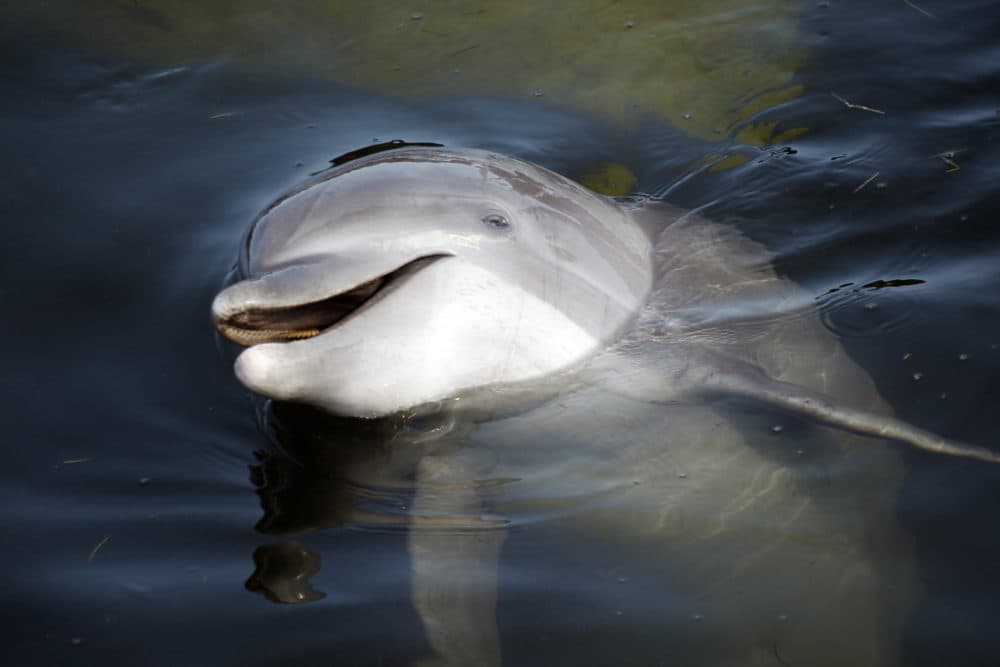Advertisement
Dolphins Change Their Calls To Be Heard Over Rising Ocean Noise

As speedboats and cargo ships continue to make the world’s oceans noisier, bottlenose dolphins are adapting their calls — making their whistles simpler, shorter and higher frequency — to compensate.
"They’re really having to simplify what they say," says Helen Bailey, a marine biologist with the University of Maryland Center for Environmental Science, and an author on a paper last week in Biology Letters that explains the phenomenon. “They’re probably also sharing less information, because they’re just trying to be heard over the noise."
Marine mammals communicate mainly through sound, and use whistles to greet each other, share information about food, and talk to their calves. Bailey says that constant, high levels of background noise may not only hamper their ability to communicate, but also lead to chronic stress. “If you’re living by a noisy road, that can be quite stressful,” she says, “and so we’re concerned.”
Bailey and her colleagues collected sound from an area about 20 miles off the coast of Ocean City, Maryland, to gather baseline data on a proposed wind farm site. The area has heavy boat traffic from both shipping and recreational vessels, similar to most coastal areas near busy ports.
Her research adds to a growing body of evidence that ocean background noise is affecting marine animals — not just mammals, but other creatures like lobster and cod, as well.
“Those fish are listening,” says Leila Hatch, a marine ecologist at Stellwagen Bank National Marine Sanctuary, off the coast of Boston. She and her colleagues have been recording and measuring the underwater soundscape at the sanctuary for more than a decade. Hatch calls the area a “highly trafficked environment,” crossed by cargo and tanker ships heading to Boston, fishing vessels, whale watching charters, and recreational and research boats. Boat propellers leave trails of bubbles, which create a background hum when they burst. The hum has increased substantially over recent decades, says Hatch: “The levels of human-induced noise and the rise of those levels is problematic for animals.”
Hatch and her colleagues have mostly focused on the effects of noise on the endangered right whale — they estimate a 70 percent loss in the amount of ocean where the whales can hear each other during their spring foraging months. But lately they’ve also been looking at Atlantic cod, which use low-frequency calls during spawning, and other animals like lobsters and crabs.
“There are a variety of different critters — both marine mammals and some of the essential keystone species of this area — that we have questions about,” Hatch says.
In 2016 the National Oceanic and Atmospheric Administration released its “Ocean Noise Strategy Roadmap,” which offered goals and recommendations to reduce the impact of noise on marine animals.
Bailey, for one, thinks new laws are in order. “Just as we have regulations about cars and their emissions,” she says, “we need to be thinking about sound emissions. As humans we already have regulations about what sounds you can be exposed to, for how long … but we’re not putting any of that protection into place for the ocean.
“The chronic sound, the boat noise, is going on all the time,” she adds. “If we could make that quieter, that would make a huge difference.”
